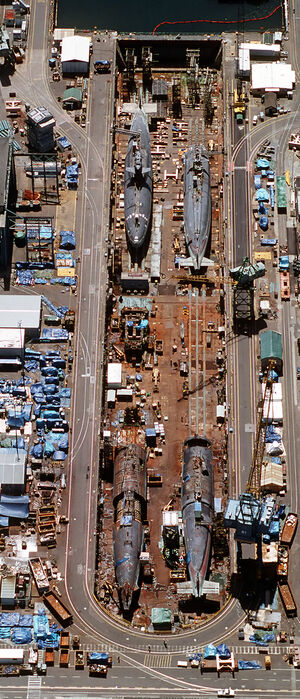Submarine (nonfiction)
A submarine is a watercraft capable of independent operation underwater.
Description
It differs from a submersible, which has more limited underwater capability. The term most commonly refers to a large, crewed, autonomous vessel. It is also sometimes used historically or colloquially to refer to remotely operated vehicles and robots, as well as medium-sized or smaller vessels, such as the midget submarine and the wet sub.
Used as an adjective in phrases such as submarine cable, submarine means "under the sea".
The noun submarine evolved as a shortened form of submarine boat (and is often further shortened to sub). For reasons of naval tradition, submarines are usually referred to as "boats" rather than as "ships", regardless of their size.
Although experimental submarines had been built before, submarine design took off during the 19th century, and they were adopted by several navies.
Submarines were first widely used during World War I (1914–1918), and now figure in many navies large and small.
Most large submarines consist of a cylindrical body with hemispherical (or conical) ends and a vertical structure, usually located amidships, which houses communications and sensing devices as well as periscopes.
Submarines have one of the widest ranges of types and capabilities of any vessel.
Submarines change the amount of water and air in their ballast tanks to decrease buoyancy for submerging or increase it for surfacing.
Submarines can work at greater depths than are survivable or practical for human divers.
Modern deep-diving submarines derive from the bathyscaphe, which in turn evolved from the diving bell.

